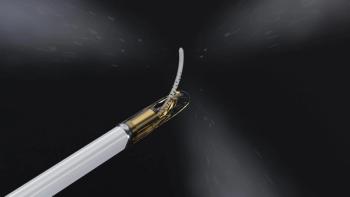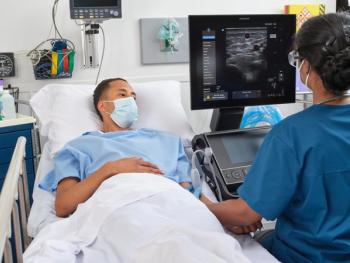
Ultrasound provides noninvasive assessment of vocal fold lesions
Laryngeal ultrasound can provide useful diagnostic information about benign lesions of the vocal folds. Unlike other assessment methods, it is noninvasive and inexpensive and requires no anesthesia or radiation.
Laryngeal ultrasound can provide useful diagnostic information about benign lesions of the vocal folds. Unlike other assessment methods, it is noninvasive and inexpensive and requires no anesthesia or radiation.
Current methods include videolaryngoscopy and microlaryngoscopy, both of which require anesthesia. Ultrasound has not been used much for evaluation of the vocal folds.
Dr. Akif Sirikci and colleagues in the radiology department at Gaziantep University in Turkey published their study in the November issue of the Annals of Otology, Rhinology, and Laryngology. They studied 14 patients with a total of 16 vocal fold lesions who had been diagnosed through videolaryngoscopy and microlaryngoscopy.
The researchers examined each patient with ultrasound prior to microlaryngoscopic surgery for treatment. The assessment included measurement of the shape, size, echogenicity, and homogeneity of the lesions.
Ultrasound was able to diagnose 14 of the 16 lesions, performing best with sessile polyps, nodules, and leukoplakia larger than 2 mm. The researchers found that leukoplakia was linear hyperechoic, nodules were heterogeneous hyperechoic, hemorrhagic polyps were hypoechoic, and other polypoidal lesions were isoechoic.
They concluded that laryngeal ultrasound, in combination with videolaryngoscopy and microlaryngoscopy, could be a valuable diagnostic tool, especially considering that it is noninvasive and painless, requires no radiation, and is inexpensive.
Newsletter
Stay at the forefront of radiology with the Diagnostic Imaging newsletter, delivering the latest news, clinical insights, and imaging advancements for today’s radiologists.




